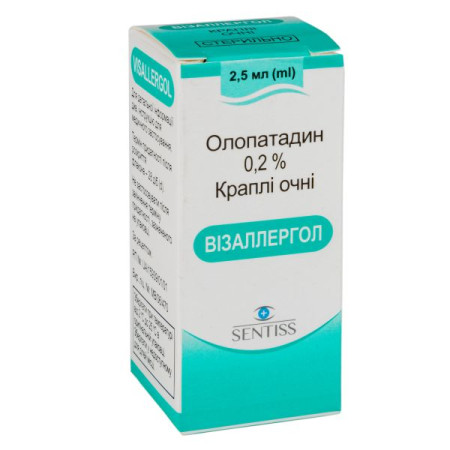Otofa ear drops solution 20000 IU/ml bottle 10 ml

Instructions for Otofa ear drops solution 20,000 IU/ml bottle 10 ml
Composition
active ingredient: rifamycin;
1 ml of solution contains rifamycin sodium equivalent to rifamycin 26 mg/ml.
(20,000 IU/ml);
Excipients: macrogol 400, ascorbic acid, disodium edetate, potassium metabisulfite (E 224), lithium hydroxide, purified water.
Dosage form
Ear drops, solution.
Main physicochemical properties: transparent liquid of red-orange color.
Pharmacotherapeutic group
Drugs used in otology. Antimicrobial agents.
ATX code S02A A12.
Pharmacological properties
Pharmacodynamics
Rifamycin exhibits antimicrobial activity against most gram-positive and gram-negative microorganisms that cause infectious and inflammatory diseases of the middle ear. The mechanism of action is associated with the formation of a stable complex with DNA-dependent RNA polymerase, which prevents the growth of bacteria.
Rifamycin is active against Bacillus anthracis, Listeria monocytogenes, R.equi, Staphylococcus, Streptococci A, B, C, G, Streptococcus, B.catarrhalis, Brucella, H.ducreyi, H.influenzae, N.gonorrhoeae, N.meningitidis, Pasteurella, Bacteroides, C.difficile, C.perfringens, Fusobacterium, Peptostreptococcus, Propionibacterium acnes, Chlamydia, Coxellia burnettii, Legionella, Mycobacterium, Enterococci.
Intestinal bacteria, atypical Mycobacterium, are resistant to rifamycin.
Rifamycin is ineffective against P. aeruginosa, which is responsible for at least 30% of infections for which the drug is indicated.
Pharmacokinetics
Pharmacokinetic studies were not performed due to low systemic absorption.
Indication
Topical treatment for certain types of ear discharge:
- condition after surgery on the middle ear;
- isolated purulent lesions of the eardrum;
- exacerbation of chronic otitis media, including with perforation of the eardrum.
Contraindication
Hypersensitivity (allergy) to any of the components of the drug.
Interaction with other medicinal products and other types of interactions
It is not recommended to use the drug simultaneously with any other medications for topical use.
Application features
No studies have been conducted on otitis externa, therefore official recommendations for the appropriate use of antibiotics should be followed when treating with this medicine.
Topical use of antibacterial drugs may cause sensitization to the active substances and lead to systemic reactions.
It is necessary to immediately discontinue use of the drug if skin rashes or other systemic manifestations of allergic reactions occur.
Do not swallow the solution, do not use as an injection.
During use, avoid touching the edge of the dropper with either your fingers or your ear to reduce the risk of infection.
If symptoms persist after a 10-day course of treatment, the patient should consult a doctor for a review of the disease and treatment strategy.
Avoid contact of the drug with clothing, as the solution may leave stains on the fabric.
Use during pregnancy or breastfeeding
There are no adequate and well-controlled studies in pregnant women.
Given the low systemic absorption of rifamycin when administered as ear drops, topical use of the drug during pregnancy or breastfeeding is permissible on the recommendation of a doctor.
Ability to influence reaction speed when driving vehicles or other mechanisms
No cases of impact on reaction speed when driving vehicles or other mechanisms were identified.
Method of administration and doses
The drug should be applied topically as an ear drop.
Drops should be instilled into the external auditory canal of the affected ear every morning, and the procedure should be repeated in the evening.
Dosage for adults: 5 drops in the affected ear, 2 times a day.
The drug can be used to wash the tympanic cavity through an attic cannula.
Dosage for children: 3 drops in the affected ear, 2 times a day.
The duration of treatment depends on the nature and severity of the disease and is determined by the doctor individually. The average duration of treatment is 7 days.
Before using the drops, warm the bottle by holding it in your palm to avoid the unpleasant sensation associated with getting cold liquid into the ear. Tilt your head, drop the required number of drops into the ear, slightly pull the earlobe back several times. Keep your head tilted for about 5 minutes to improve the penetration of the solution into the ear canal. If necessary, repeat the procedure for the other ear.
Do not administer the drug under pressure.
After completion of treatment, the vial should be discarded and should not be stored for future use.
Children
Use as prescribed by a doctor for the treatment of children without age restrictions.
Overdose
No cases of overdose have been reported. Due to low absorption, overdose is unlikely.
Adverse reactions
Due to the content of sulfites in the preparation, there is a risk of allergic reactions, including anaphylaxis, bronchospasm, and skin manifestations, including rashes and eczema.
Research.
The eardrum may become pink (which can be seen during otoscopy).
Expiration date
3 years.
Storage conditions
Store at a temperature not exceeding 25 °C.
Keep out of reach of children.
Packaging
10.0 ml in a bottle, 1 bottle with a pipette in a cardboard box.
Vacation category
According to the recipe.
Producer
Bouchard Recordate Laboratories.
Location of the manufacturer and its business address
Le Wilson Building, 70 Avenue du General de Gaulle, 92800 Puteaux, France.
There are no reviews for this product.
There are no reviews for this product, be the first to leave your review.
No questions about this product, be the first and ask your question.











